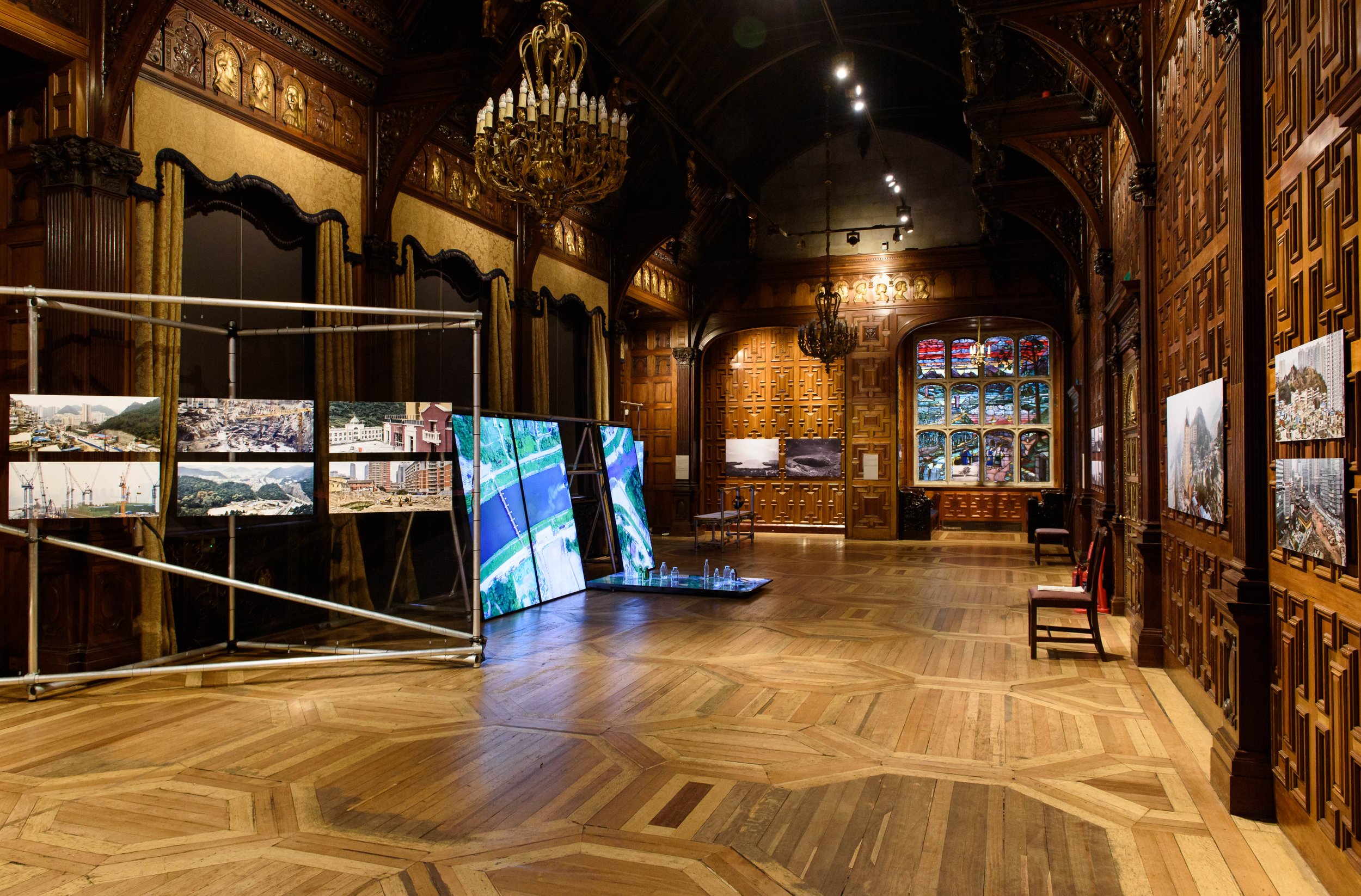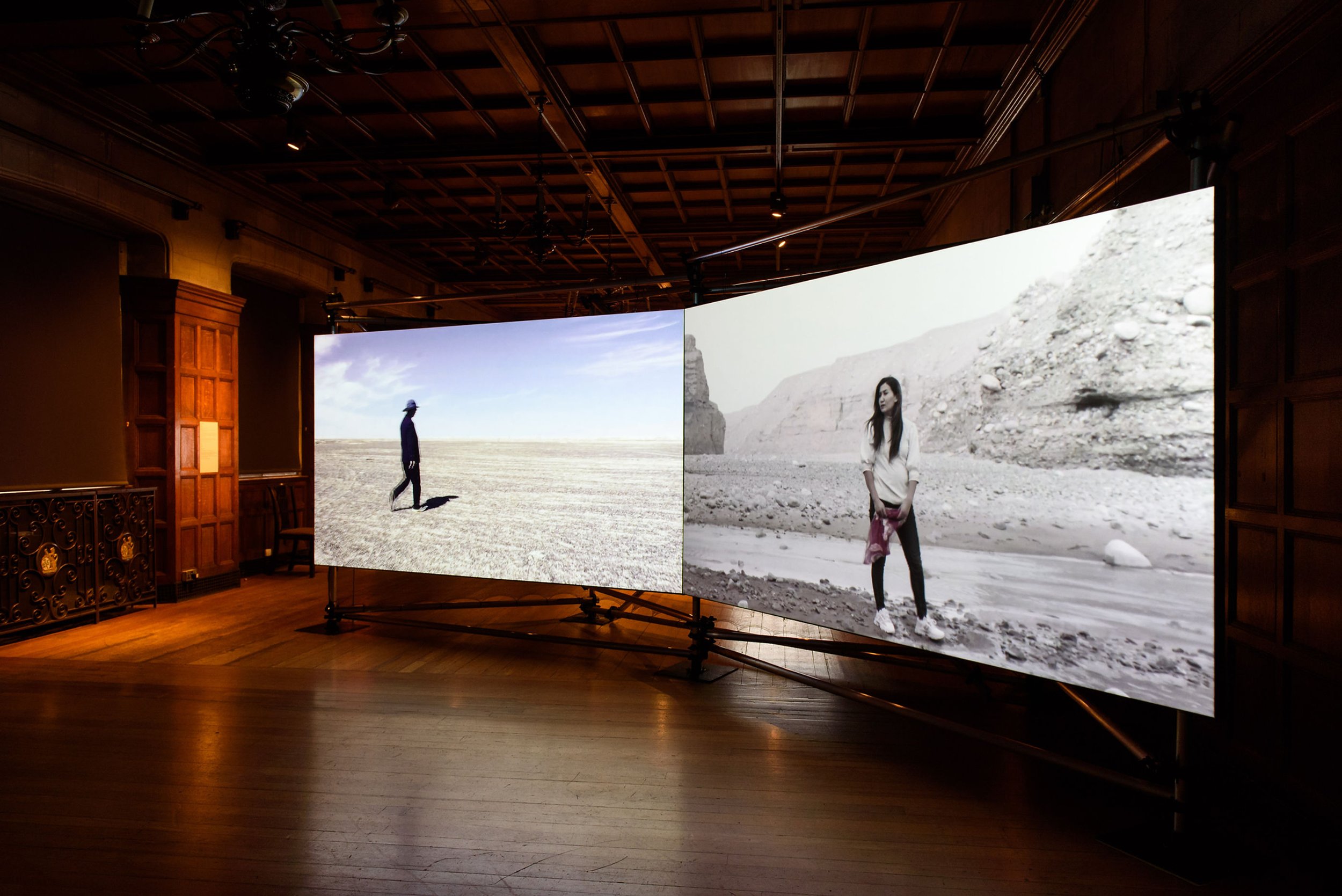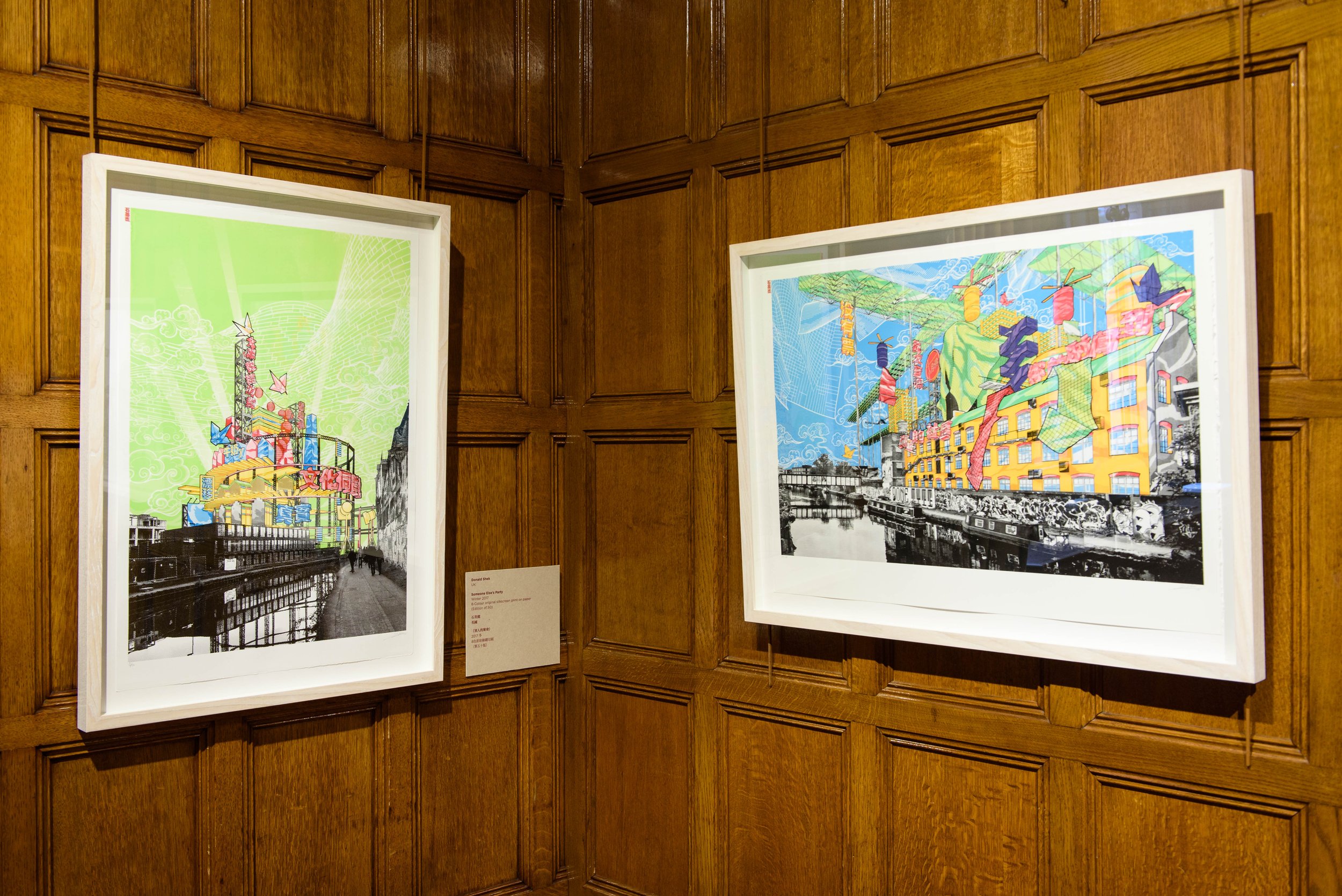Observe 觀察

The act of observing is subjective in its nature. Capturing a moment in time and space can sometimes be purely coincidental or highly deliberate. The perspective that an artist uses to record their observation alters the way we as viewers perceive their own environment. We are impelled to see it from the particular angle of their view. In a way, it liberates us from our own self-imposed boundaries.
The works in this section invite viewers to look at various locales in Southeast and East Asia where nature and the urban interplay. They show us unfamiliar landscapes in the region not often seen by Western audiences, exposing us to some of the raw elements experienced by the artists as they capture their observation. We see instances where environments are destroyed or redeveloped to make way for urbanisation, where nature is harnessed for humanity’s use and where nature triumphs over humanity. These works urge us to question our future in which the climate crisis is already altering the ways we live, and ask us to make choices about the world we want for ourselves.
Wang Wei (China/UK)
One Belt One Road
2018
Photograph series
The Belt and Road Initiative is a global infrastructure development strategy adopted by the Chinese government in 2013 that connects Asia with Africa and Europe via land and maritime networks. Wang Wei’s photography series captures the rapid development of Guiyang, her hometown city, and Chongqing as a result of this policy.
Artist Biography
Wang Wei is a photographer based in London. She specialises in portraits, still life, interiors, city landscapes and architecture, with a focus on the fine details of unexaggerated, ordinary perspectives.
Find out more about the artist here.
Law Yuk-Mui (Hong Kong)
River Atlas
29th July, 2021/2nd August, 2021,
Time: 10am–6pm
4-channel video and sound installation, 4K, colour, LED TV, silver reflective glass, glass bottles, earphones
20 minutes
This video installation started with Law Yuk-Mui’s interest in rivers in Hong Kong that had the same name as rivers in India. Her research revealed that when Hong Kong was colonised by the British, they sent an Indian illustrator to document the landscape and rivers. Fascinated by this, she started her own field recording of these places, using drones to map the river, which flew from morning till dusk over Hung Leng Tsuen all the way north to Lo Wu railway station.
I walked to the seaside, from whence the waves sound came
2015
Photography
Arahama is the coastal area of Sendai city in Japan which suffered heavy damage from the tsunami that followed the Tohoku earthquake in 2011. In this series of photographs, Law Yuk-Mui followed the physical traces where the wave hit, including the abandoned elementary school, the bending, drooping and tilting guardrails, the remaining structure of a building, the lonely tree, and towards the sea.
Artist Biography
Law Yuk-Mui is a multimedia artist whose work often intervenes in the mundane space and daily life of the city and catches the physical traces of history, psychological pathways of humans, the marks of time and political power in relation to geographical spaces.
Find out more about the artist here.
Robert Zhao Renhui (Singapore)
Singapore 1925-2025
2015
Photography
This project chronicles the significant changes in Singapore’s natural and urban landscape that have occurred over a 100-year period. The photographs in this volume have been carefully selected by researchers from the artist’s archival project The Land Archive to highlight the changing face of this tropical island-state. They represent issues of land reclamation, national boundaries, ecological changes, pollution, conservation and the ever-evolving skyline.
Singapore - A Growing Nation
2022
Single Channel Video, with sound
12:16 minutes
In the mostly urban city-state of Singapore, nature flourishes in pockets, but its growth is simultaneously curtailed in a process of continuous human labour to prune and maintain it. A Growing Nation explores the complex and contradictory interplay between nature and the urban, non-human and human, allowing for a sense of openness and radical mystery to be revealed in the everyday.
Artist Biography
Robert Zhao Renhui is a multi-disciplinary artist and the founder of the Institute of Critical Zoologists. His artistic practice addresses humanity’s relationship with nature, and is characterised by a longstanding interest in investigating sites defined by the conflation of wilderness and urbanisation.
Please find more about the artist here.
-

Respond 回應
-

Contemplate 沉思
-

Observe 觀察
-

React 反應












